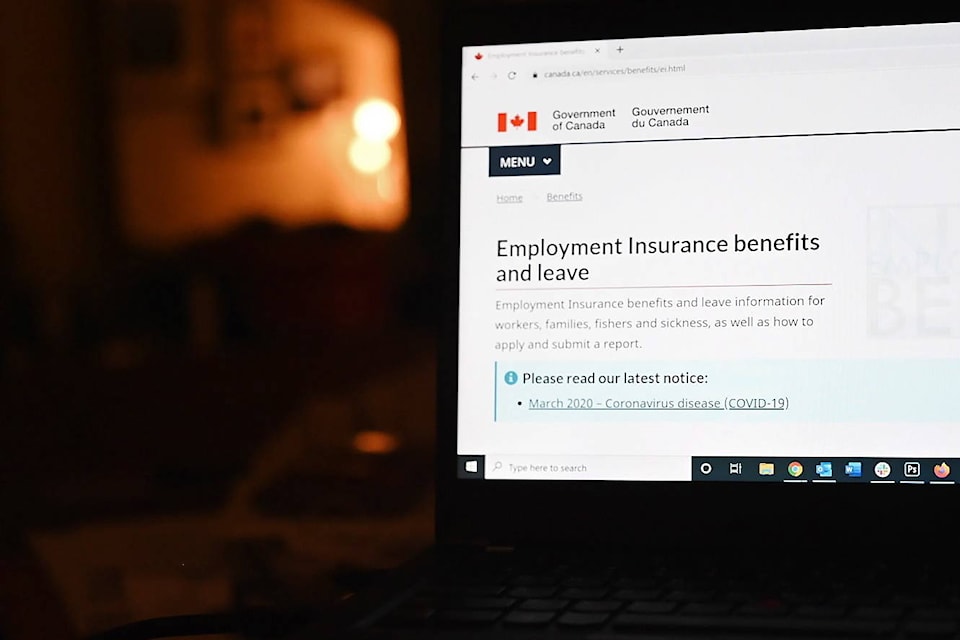The federal government is being urged to rethink Canada’s employment insurance program as millions of workers are moved off of an emergency benefit while the country’s job market is still recouping heavy losses due to COVID-19.
The government estimates four million people will be moved onto EI when the Canada Emergency Response Benefit starts winding down next month. Prime Minister Justin Trudeau is promising a parallel benefit for gig and contract workers who don’t qualify for payments through the decades-old system.
The Workers Action Centre, which advocates for low-wage workers and those in precarious employment, says many of the people it works with would get between $600 and $1,000 a month if they’re pushed onto EI next month, with the way the safety-net program is currently structured.
That would be much less than the $500 per week paid out through the CERB to workers whose incomes crashed as a result of the COVID-19 pandemic.
Deena Ladd, the group’s executive director, said an overhaul of EI itself is necessary to provide adequate benefits to stabilize an economy with sectors that won’t fully open for months or may have to shut down again in response to outbreaks.
The shutdowns of March and April reduced by about three million the number of jobs in the country, and 2.5 million more workers had their hours and earnings slashed.
Statistics Canada reported last month that 3.1 million were still affected by the pandemic, including 1.4 million who weren’t at work due to COVID-19, even as the country gained 953,000 jobs in June. The unemployment rate fell to 12.3 per cent after hitting a record high of 13.7 per cent in May.
David Macdonald, a senior economist with the Canadian Centre for Policy Alternatives, said the labour market still has a long way to go before reaching pre-pandemic levels, especially for low-wage workers, women and young people, who have disproportionately felt the economic sting.
“Some sectors — food, retail, airlines and hotels — simply won’t be the same without a vaccine,” he said. “And in those areas, we should continue to see no recovery, or certainly nowhere near a full recovery until we see a vaccine.”
READ MORE: View Royal mayor victimized in CERB identity theft scam
The pace of jobs recovery has been expected to slow after a striking rebound in May and June. The average economist estimate from data firm Refinitiv is for a gain of 400,000 jobs in July and an unemployment rate of 11 per cent.
Brendon Bernard, an economist at job-posting-site Indeed Canada, wrote this week that the results for July will rest on three areas: accommodation, food services and culture. As of June, those accounted for 38 per cent of net job losses since February.
Another sector that may not be back until next year at the earliest is theatre, which relies on in-person audiences made up mostly of strangers.
Toronto-based actor and musician Richard Lam said having a benefit with similar help to the CERB would help workers in the sector who are self-employed or do contract work, or work multiple jobs in other affected industries to pay their bills
“Many artists in Canada and the people who support their work, they lost their Plan A and their Plan B at the same time, and they have no safety net to fall back on,” he said. “The CERB provided a real light in the darkness for the theatre industry.”
Since its launch, the CERB has paid $62.75 billion in benefits to 8.46 million people, according to the latest government figures.
The government has hinted at some of the changes likely to happen with the new benefit — including a provision for workers to keep a portion of the payments even while earning income, and access to skills-training programs — and to EI itself, such as a reduction in the hours required to qualify.
Macdonald said the government should consider raising EI’s wage replacement rate, currently set at 55 per cent up to a weekly maximum, to around the same 75 per cent mark offered by the federal wage subsidy program employers have been offered in the pandemic.
He added that a floor on benefits similar to the weekly $500 on the CERB could help those set to receive far less on EI.
Jordan Press, The Canadian Press
Like us on Facebook and follow us on Twitter.
Want to support local journalism during the pandemic? Make a donation here.
